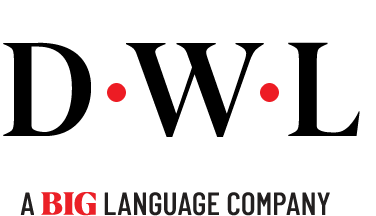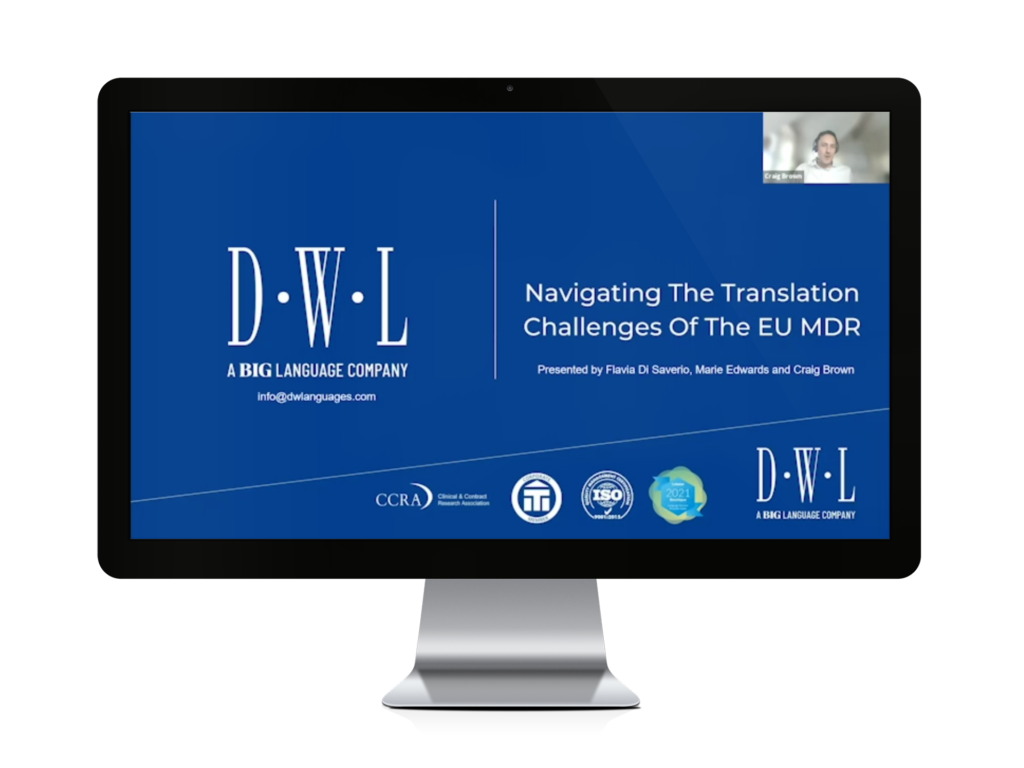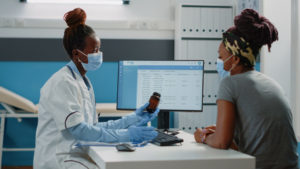This is a case study. Amid the global uncertainty of 2020, one of our medical device customers was growing tired of dashing between the multiple suppliers involved in designing and translating product labelling.
In addition to the pandemic, there were also considerable hurdles in the UK, including catching up on MDR requirements and concerns about supply-chain stability after Brexit.
Despite the turmoil in the industry, reputations still hang on the quality of printed materials, brochures and labelling for Medical Devices.
With no room for error, any mistakes could, at best, harm your brand, and at worst, harm a patient.
The product manager in question knew that she needed a change, but wasn’t sure how best to improve this process whilst still maintaining the same level of quality.
And so it was that our customer found herself sending labelling files between team members, a design agency and separate translation providers, risking duplication across the entire workflow.
Not only was the administrative burden high, but our customer also had to distribute and store various versions of the same files, despite not having the software needed to open the design packages herself.
As the client was unable to view the contents or understand the translated files, there was also a high risk of version control errors, particularly when pressure on deadlines mounted.
Without the right software, language skills or training in desktop publishing packages, our customer was taking on unnecessary risks.
A solution was needed.
To streamline our customer’s workflow, we now act as a single point of contact for the whole process, and liaise directly with their design agency. This saves the customer precious time before the brochures go to print, and improves communication between the translation and design teams.
With industry standard Translation Management Software (TMS) and Computer Aided Translation (CAT) tools helping us to automate workflows and accept most design file types, we were best placed to do the legwork and version control ourselves.
By liaising with the design agency directly, we can work quietly in the background to ensure that no errors creep into the printed materials.
In addition, since we are in control of the file exchange, we can ensure that all labelling materials are checked for accuracy and that only the correct translated versions are submitted to the client.
This is particularly important for Middle Eastern and Asian languages, which tend to pose the most problems for our customers, and which our team of skilled linguists is well-equipped to proofread and edit.
As a result, our customer sends fewer emails and trusts that their translated materials are accurate and ready for printing in time for deadlines.
Our customer is now free to focus on other important tasks and can rely on us to deliver accurate materials on time.
The customer’s design agency also benefits from this arrangement, as they can receive quick answers to linguistic questions impacting on their artwork design.
This represents our ideal way of working. The customer hands over the source documents and a brief, and we do the hard work to return a translated materials, on time and fit for purpose.
We are constantly working to ensure that our clients benefit from efficient management at all stages of the translation process; in turn, we are flexible enough to adapt our approach depending on the task at hand.
This could include:
- Working directly with external service providers.
- Liaising with local customer affiliates.
- Corresponding with Health Authorities.
- Providing and tailoring a dedicated Customer Portal.
- Selecting appropriate quality control measures to suit project scope and budget.
Delivering a quality service doesn’t only mean accurate translations, it means adapting all areas of our business to ensure that our customers’ problems are solved.
If you find yourself doing too much legwork to get your printed materials translated, rely on us. Problem solved.







